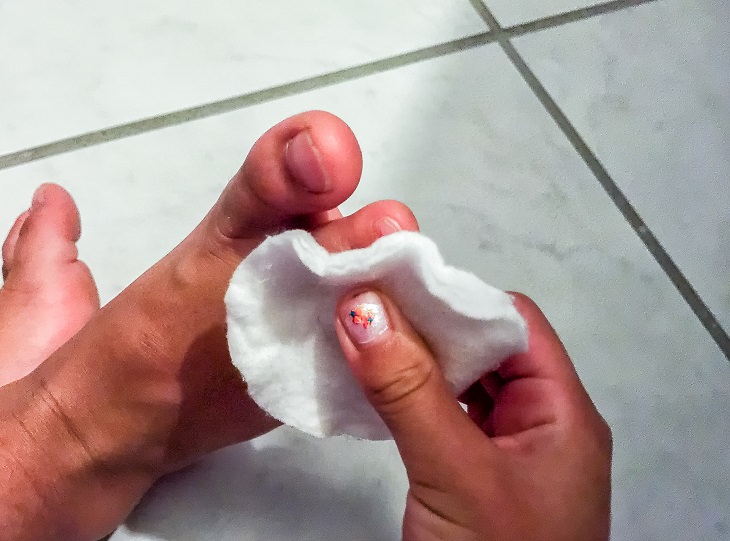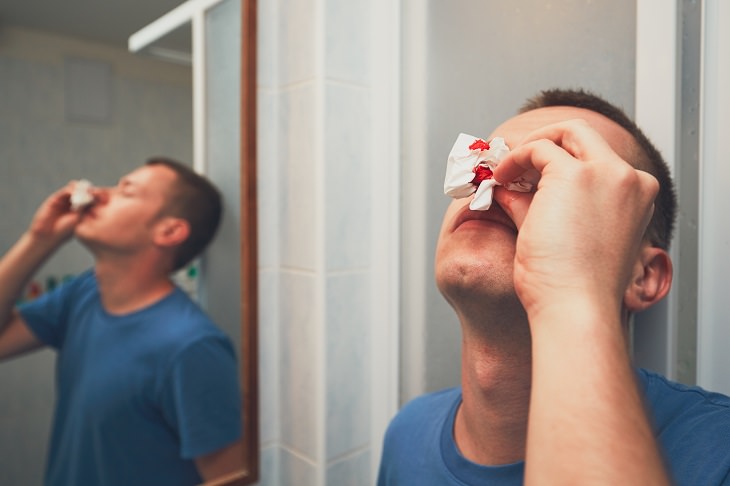

Why is it a problem?
Peroxide destroys connective tissue cells, preventing the wound from healing properly. Alcohol and iodine burns healthy cells and can induce pain, burns, and shock if applied to a wound.
Doing it right
Wash the wound with drinking water or boiled water, and then apply a healing ointment to the cut. A Band-Aid or bandage should not be applied unless it is necessary, otherwise the wound will take longer to dry out and heal.
2. Cardiac Compressions Can Lead to Rib Fractures and Lung Damage
Why is is a problem?
Cardiac compressions, if done incorrectly, can easily lead to broken ribs, which may seriously damage the heart and lungs.
Doing it right
You should only carry out cardiac compressions if you’re certain that the person isn’t breathing and there’s no qualified doctor around. While one person is calling the ambulance, another should do heart compressions to the rhythm of 100 per minute (to the beat of “Staying Alive” by the BeeGees). Mouth-to-mouth resuscitation should be performed once the heart has started pumping again.

Why is it a problem?
Paracetamol (or Acetaminophen) relieves pain and inflammation and can be found in many popular drugs. Overdosing on paracetamol can lead to liver and kidney failure.
Doing it right
Measure the dose carefully. The maximum dosage for adults is 4g per day. Due to Acetaminophen being present in many drugs, especially anti-flu medication, it’s important to take extreme caution when combining medications.
4. Applying a Tourniquet to Stop Bleeding Can Lead to Amputation
Why is it a problem?
An incorrectly or unnecessarily applied tourniquet can lead to an excess in limb pressure. This doesn’t stop the bleeding but prevents blood circulation which can lead to necrosis.
Doing it right
Apply a large amount of sterile gauze or clean cloth to the wound and push down hard – this should be enough until the ambulance arrives. The only exception should be when there is serious bleeding, where the risk of death is higher than that of losing a limb.

Why is it a problem?
Most road accident deaths occur as a result of neck and spinal injuries. By moving a road accident victim, you run the risk of paralyzing or killing them.
Doing it right
If a person is injured and there’s the possibility that it’s a head, neck, or spinal injury (for example, they can’t feel their limbs, but there’s blood), call an ambulance and keep an eye on the victim’s breathing until the paramedics arrive.
6. You Shouldn’t Take Vomit-Inducing Drugs in Cases of Serious Poisoning
Why is it a problem?
Emetic drugs can cause serious esophageal burn, which can lead to vomit entering the lungs.
Doing it right
In a suspected poisoning case, call the ambulance, describe the symptoms and probable source of poisoning, and write down the prescribed actions. Don’t try to assess the danger yourself or seek advice on the internet.

Why is it a problem?
If you do this, the blood pressure in your head will increase. Furthermore, it’s not possible for you to tell how much bleeding there is going to be, so the blood might get into your lungs or cause vomiting.
Doing it right
Hold your head upright to reduce pressure, apply a cold pack, and then close one nostril with your finger for 15 minutes. Do the same for the other while breathing through your mouth. If the bleeding doesn’t stop, repeat the above procedure. If it continues after this, or if it has been caused by an injury, call an ambulance.
8. Don’t Put a Spoon into the Mouth or Pull the Tongue of a Person Having a Seizure.
Why is it a problem?
When having a fit, a person can swallow and choke on an object that has been placed into their mouth to protect the tongue.
Doing it right
A person may start to shake uncontrollably and even turn purple, but seizures are self-limiting, and the body is unable to do much harm to itself. Just call a doctor, and make sure that the person is safe from external harm and is breathing at a normal rate. It’s impossible to swallow your own tongue, and biting it isn’t dangerous. After the seizure has finished, place the person on their side.
9. If You’re Bitten by a Snake or a Venomous Insect, Don’t Suck out the Poison

Why is it a problem?
The venom will mix with your saliva and can then damage your mucous membrane. This can accelerate the poisoning and lead to lung edema and heart failure.
Doing it right
If you’re bitten on a limb, lie down so that the bitten area is below your heart. Call an ambulance, describe what bit you, and drink a lot of water.
10. Don’t Take a Sick or Injured Person to the Nearest Hospital
Why is it a problem?
Not every hospital will have the necessary medication, specialists, or equipment to treat the injured person. Furthermore, driving fast to get to hospital soon could lead to a serious road accident.
Doing it right
Call the ambulance, carefully describe the situation, and listen to the operator who will tell you whether and where you should take the injured person.